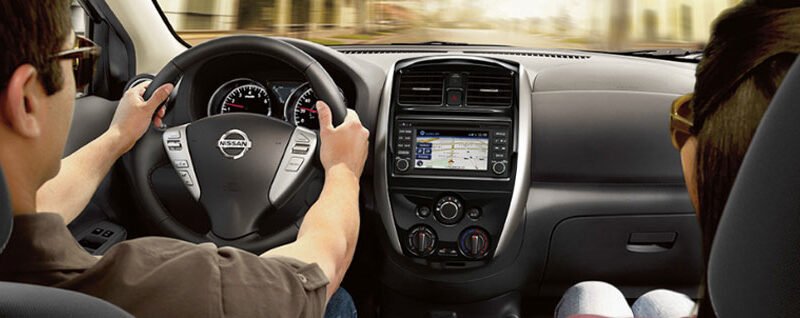Investing in a used SUV can be a practical and cost-effective way to get the spaciousness, versatility, and off-road capabilities that these vehicles are known for. However, before committing to a purchase, it’s crucial to thoroughly test drive the SUV to ensure it meets your expectations and doesn’t come with any hidden issues. A test drive is not just an opportunity to feel the comfort of the seats and enjoy the drive; it’s a chance to scrutinize the vehicle’s overall condition, performance, and functionality.
In this article, we will explore essential tips for test-driving a used SUV. These guidelines will help you make an informed decision and ensure that the SUV you choose aligns with your needs and preferences.
Exterior Inspection
The exterior of a used SUV can reveal a lot about its history and overall condition. Taking the time for a thorough examination before hitting the road can save you from potential headaches. Begin by the body of the SUV. Look for any dents, scratches, or signs of repainting. Inconsistencies in the paint color or texture might suggest that the vehicle has undergone repairs due to previous accidents. To choose the best SUV for your needs, click the link here.
Inspect the vehicle for any signs of rust or corrosion, particularly in common trouble spots such as the wheel wells, door sills, and undercarriage. Surface rust may be manageable, but extensive corrosion can compromise the SUV’s structural integrity. Also, check all the windows and windshields for cracks, chips, or any signs of damage. Ensure that the headlights, taillights, and turn signals are functional. Flickering lights or moisture inside the lamp housings could indicate electrical issues.
Engine Start-Up
The moment the engine roars to life is a pivotal point in any test drive. It sets the tone for the drive ahead and provides critical insights into the health and performance of the SUV’s powertrain. When you turn the key or press the ignition button, the engine should start smoothly without hesitation. Listen for a consistent and even crank, indicating a healthy starter and battery. An engine that struggles to start or produces a grinding noise may signal issues with the ignition system.
Pay attention to the engine’s idle quality. A well-maintained SUV should idle smoothly without any erratic behavior. An irregular or rough idle could point to problems with the fuel delivery system, spark plugs, or sensors. As the engine starts, listen carefully for any unusual noises. Knocking, ticking, or rattling sounds could indicate engine issues such as worn-out bearings, piston problems, or issues with the timing chain.
Driving Dynamics
The driving dynamics of a used SUV play an essential role in determining its overall performance and suitability for your needs. Testing various aspects of the vehicle’s handling, steering, and braking during the test drive will help you gauge its responsiveness and uncover potential issues.
- Pay close attention to how the SUV responds to steering input. The steering should feel smooth and responsive without excessive play or stiffness. A vehicle that wanders or feels loose may have issues with the steering system, alignment, or suspension components.
- Navigate the SUV through a variety of road conditions, including straightaways and curves. Assess how well it maintains stability and composure. Excessive body roll, swaying, or an uncomfortable feeling through turns could indicate problems with the suspension or worn-out components.
- Test the brakes under different conditions, including gentle stops and more abrupt deceleration. The brakes should feel responsive, providing consistent and even stopping power. Listen for any squeaks or grinding noises, as these may indicate brake pads or rotors issues.
- Evaluate the SUV’s acceleration and power delivery during the test drive. It should respond smoothly to throttle input without hesitation or surges. Irregularities in acceleration may indicate fuel system, transmission, or engine components issues.
- For automatic transmissions, pay attention to how smoothly it shifts between gears. The transitions should be seamless, without jerks or delays. In the case of manual transmissions, gears should engage without grinding or slipping. A transmission that hesitates or exhibits rough shifts may require attention.
Electronics and Features
Modern SUVs have many electronic components and features that contribute to the overall driving experience. During the test drive of a used SUV, inspecting and testing these electronic systems to ensure they are in proper working order is crucial. Test the infotainment system by navigating through various functions like touchscreen, navigation, and audio controls. Ensure that the display is responsive and that all features, including Bluetooth connectivity and smartphone integration, work as intended.
Tune into the radio and test the audio quality through speakers. Check for any distortion, rattling, or dead spots in the sound. If the SUV is equipped with additional audio features, such as a premium sound system, ensure all elements function correctly. Then, verify the functionality of the heating, ventilation, and air conditioning system. Test different temperature settings, fan speeds, and airflow directions. Pay attention to any unusual smells or noises coming from the vents.
Conclusion
A comprehensive exterior inspection can gain valuable insights into the SUV’s history and potential issues. Remember that a well-maintained exterior often reflects a vehicle that has been cared for, indicating a higher likelihood of a reliable driving experience.














Comments